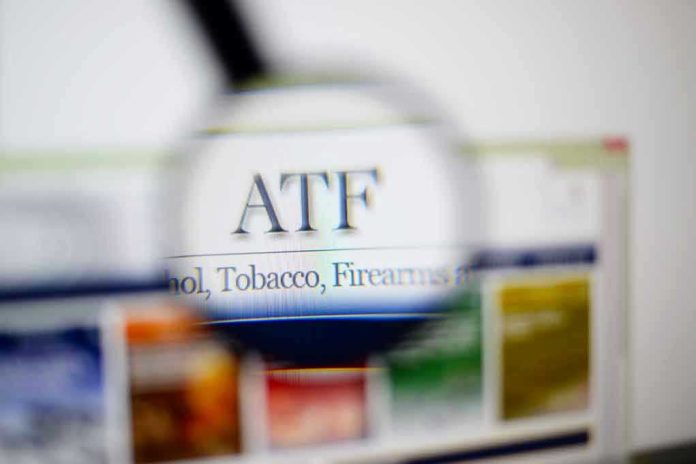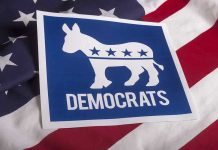
A beer so strong it’s outlawed in nearly a third of the country isn’t just a drink—it’s a statement about how far American brewing, and the rules that govern it, are willing to bend before they break.
Story Snapshot
- Samuel Adams’ Utopias 2025 clocks in at an unprecedented 30% ABV, making it illegal in 15 states
- The beer’s release sparks debate about the blurred lines between beer and spirits and the patchwork of American alcohol laws
- Collectors and enthusiasts are scrambling for a taste, while regulators double down on bans
- The release marks both a technical triumph and a regulatory flashpoint in craft beer history
Samuel Adams Utopias 2025: An Extreme Brew That Redefines the Category
In October 2025, Samuel Adams upended expectations with Utopias 2025—a beer so potent it rivals whiskey and defies conventional definitions of beer entirely. The 30% ABV is no accident; it’s a deliberate escalation in a decades-long arms race among craft brewers to see just how far beer can go before it stops being recognized as beer at all. Utopias isn’t just aged in barrels; it’s forged in a labyrinth of casks—Irish Whiskey, Amarone, White Port, Cognac, Scotch and more—each adding layers of complexity that would be unthinkable in a standard ale. This is not a casual backyard brew; it’s a collector’s trophy and a technical marvel, a testament to what happens when you give brewers the freedom—and the audacity—to push every possible limit.
Sam Adams has a new beer that's so strong it's illegal in 15 states: Utopias only comes out every two years — and it's one of the most anticipated offerings in the beer world https://t.co/RG6s6E9zSl pic.twitter.com/mRLX7KuS5R
— Quartz (@qz) October 22, 2025
But with innovation this bold, legality becomes a moving target. Utopias 2025 is barred from sale in 15 states, places where lawmakers have drawn a hard line on what can be legally labeled and sold as beer. For Samuel Adams, that means their most ambitious release is also their most controversial, and for beer lovers in those states, it’s an exercise in frustration or, inevitably, creative acquisition. The ban isn’t just a bureaucratic footnote; it’s proof that when craft brewers innovate faster than regulators, something has to give, and sometimes that “something” is consumer access.
The Regulatory Maze: Who Decides What Beer Can Be?
The United States’ alcohol laws are a patchwork quilt, stitched together state by state, each with its own often-arcane rules. Some states permit high-octane brews without batting an eye, while others cap beer ABV at levels that would make a German pilsner look strong by comparison. Utopias 2025 explodes these boundaries—its 30% ABV places it closer to port or sherry than to anything you’d normally find in the beer aisle. Regulators claim their hands are tied, citing public health, tax distinctions, and the long tradition of separating beer from spirits. Yet with each new “extreme” beer, those distinctions grow fuzzier, and the law itself is forced to play catch-up. For Samuel Adams, navigating this maze is as much a part of their brand as the beer itself; every release is a negotiation between art, science, and law.
Collectors in legal states rush to secure a bottle, knowing scarcity and controversy only add to the mystique. Meanwhile, the secondary market buzzes with activity, as demand in banned states surges. Retailers operating on the right side of these invisible lines see a windfall, while their counterparts across state borders are locked out. The result? A microcosm of American federalism in a bottle: your right to buy Utopias depends not on age or sobriety, but on your zip code.
Innovation Versus Regulation: The Eternal Tug-of-War
Samuel Adams has spent decades cultivating its reputation as a boundary-pusher, beginning with Triple Bock in 1994 and evolving through each successive Utopias release. The 2025 edition, the first to hit 30% ABV, is the logical culmination of this ethos: a beer designed to shatter ceilings, not just raise them. For enthusiasts, each bottle is a conversation piece—a liquid argument about what beer is and could be. For regulators, it’s a headache, a challenge to long-standing categories and tax structures. The industry itself watches closely, as every forbidden bottle fuels the allure of rarity and the possibility of policy change.
Other brewers have played this game—BrewDog’s “The End of History” and Schorschbräu’s “Schorschbock” pushed ABV even higher, but those were stunts, not annual traditions. Utopias stands out because it’s both an engineering feat and a commercial product, released on a regular schedule, with a mainstream brand behind it. The stakes are higher, the audience broader, and the regulatory scrutiny more intense. Whether Utopias 2025 prompts legal reform or a fresh round of bans, it guarantees one thing: the debate over what beer can be is far from over.
Implications for the Future of Craft Beer
The story of Utopias 2025 is about more than one brewery’s technical prowess or a handful of outdated laws—it’s about the future of American drinking culture. As brewers continue to innovate, the regulatory walls that separate beer from spirits look increasingly arbitrary, sustained less by logic than by inertia. The market’s response—excitement, frustration, and a thriving gray market—suggests consumers are ready for those walls to come down, or at least to be redrawn. Each banned bottle tells a story of progress bumping up against policy, and of a culture that prizes novelty even in the face of prohibition-lite.
Samuel Adams, for its part, seems content to keep pushing. The brewery’s leadership sees Utopias as both a crown jewel and a provocation—a way to keep the conversation going, even as regulators and competitors scramble to catch up. In the end, Utopias 2025 serves as a reminder: in the world of craft beer, the only real constant is change. And sometimes, that change comes in a bottle you’re not even allowed to buy.
Sources:
Samuel Adams Utopias Official Site
Total Wine & More Product Page
Des Moines Register: Sam Adams Utopias 2025 Beer













